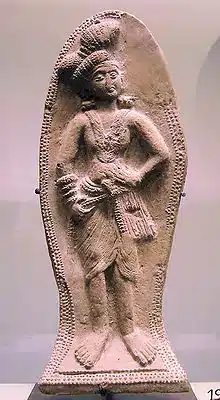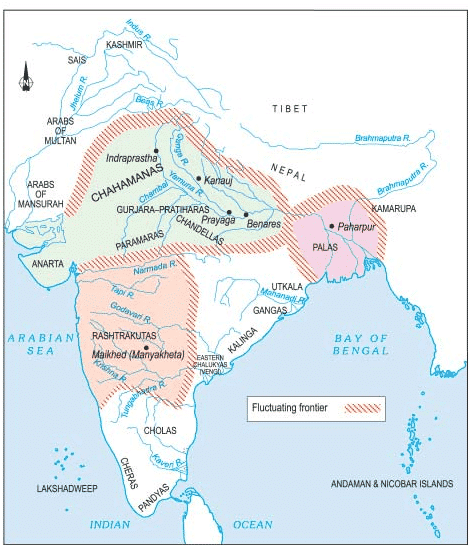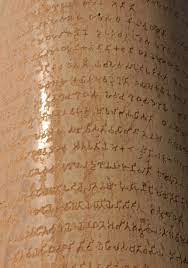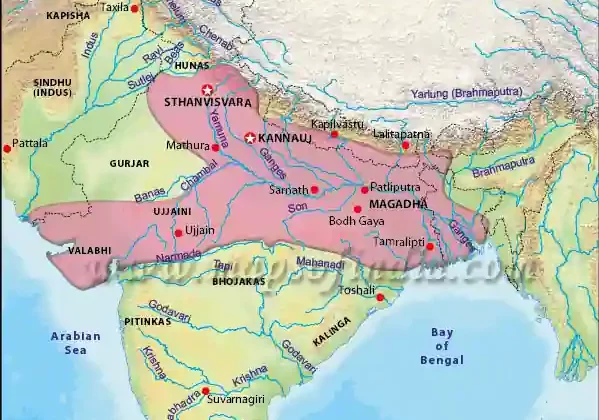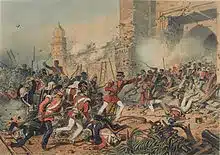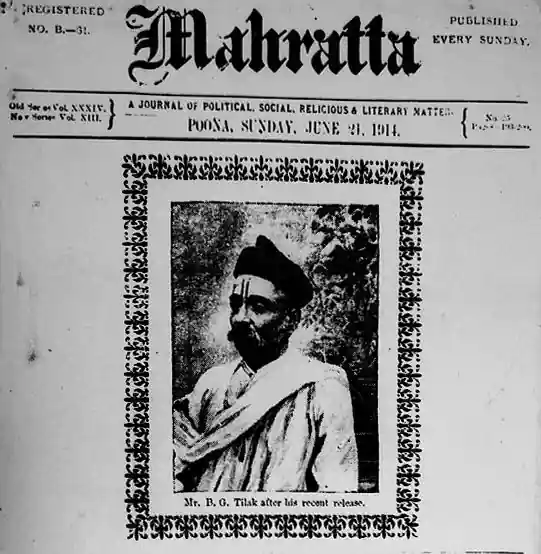Sunga Dynasty (185 BC to 73 BC)
The Sunga Dynasty spanned from 185 BC to 73 BC. The capital of the Shunga Dynasty Was Pataliputra. Vidisha was the capital of later Shunga rulers.
- It is pertinent to note that Pushyamitra’s empire extended over only part of the erstwhile Maurya empire, including Pataliputra, Ayodhya, Vidisha, and some parts of modern day Punjab (like Jalandhar and Sakala, or Sialkot as it is known now).
- The Sungas are considered Brahmanas in their caste origins, and they are referred to in both Buddhist and Brahminical texts such as the Harshacharita, the Brihadaranyaka Upanishad, Panini’s Ashtadhyayi, Kalidasa’s Malavikaagnimitram, Divyavadana and Tarantha’s (a Buddhist scholar) account.
- The ten Shunga kings ruled, in all likelihood, for a total of 112 years.
- The most important challenge to the Shunga rule was to protect north India against the invasions of the Bactrian Greeks from the northwest who advanced up to Pataliputra and occupied it for some time.
Pushyamitra Sunga (185 BC TO 151 BC): Sunga Dynasty
Pushyamitra Shunga was the Brahmin army chief of Brihadratha, the last king of the Mauryas. During a military parade, he killed Brihadratha and established himself on the throne in 185 or 186 BC.
- Pushyamitra Sunga’s capital was at Pataliputra.
- He was the viceroy of the Mauryas at Ujjain and was a real war hero.
- He was not happy with his king Brihadratha, who failed in containing the Yavanas and attacks from the western sides.
- He was credited to repulse the two Greeks’ attacks and conquest over Vidarbha. The first of these attacks from Greeks, which were repulsed by Pushyamitra Shunga, was under Demetrius and another was under Meander. This encounter is mentioned in Patanjali’s works (who refers to the yavanas, that is, foreigners from west coming up to Ayodhya and Chittor) as well as in Kaildasa’s Malavikaagnimitram (which narrates the incident of the challenging of Pushyamitra’s Ashvamedha horse by the yavanas, which led to a military encounter between prince Vasumitra, the son of Agnimitra, and the yavana army).
- Pushyamitra is also known to have repelled the Kalinga’s king Kharvela conquest.
- The drama Malavikaagnimitram mentions the conflict between Pushyamitra and Yajnasena, the king of Vidarbha (eastern Maharashtra), and the victory of the Sungas over them.
- The Divyavadana gives an account of Pushyamitra’s cruelty towards Buddhists and his hatred towards Buddhism. But there are also evidences that Barhut Stupa was built during the Shunga Empire only.
- He performed Vedic sacrifices such as Ashvamedha, Rajasuya, and Vajapeya.
- The Ayodhya Inscription of Dhandeva mentions that he performed two Ashwamedha Yagyas (Horse Sacrifices).
- During his reign, the Stupas at Sanchi and Barhut were renovated. He built the sculptured stone gateway at Sanchi.
- Pushyamitra Sunga patronized the Sanskrit grammarian Patanjali.
- According to the Puranas, his reign lasted for 36 years.
- He died in 151 BC.
Agnimitra (149 BC -141 BC): Sunga Dynasty
- Agnimitra, the second king of Shunga dynasty, succeeded his father Pushyamitra Shunga and reigned for a short period of 8 years. His reign lasted from about 149 BC to 141 BC. By this time, Vidarbha broke away from the empire.
- He is the hero of Malvikagnimitram of Kalidasa.
- Mālavikāgnimitram tells the story of the love of Agnimitra, the Shunga Emperor at Vidisha, for the beautiful handmaiden of his chief queen. He falls in love with the picture of an exiled servant girl named Mālavikā.
- His son Vasumitra succeeded him as king.
Bhagabhadra (114 BC -83 BC): Sunga Dynasty
- We know about the king Bhagabhadra by a Heliodorus pillar, which has been found in Vidisha, Madhya Pradesh near modern Besnagar.
- Although the capital of the Shunga was Pataliputra, he was also known to have held court at Vidisha.
- He is best known from an inscription at the site of Vidisha in central India, the Heliodorus pillar, in which contacts with an embassy from the Indo-Greek king Antialcidas is recorded, and where he is named “Kasiputra Bhagabhadra, the Saviour, son of the princess from Benares”.
- Heliodorus was a Greek ambassador and he dedicated this pillar to God Vasudeva (Vishnu).
- The Heliodorus pillar has a surmounted figure of a Garuda.
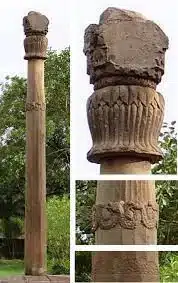
- This inscription is important in that it tends to validate that the Shungas ruled in the area of Vidisa around 100 BCE.
- This is also corroborated by some artistic realization on the nearby Sanchi stupa thought to belong to the period of the Shungas.
- Altogether, three Shunga pillars have also been found in the area.
- The Garuda Pillar erected by Heliodorous and the inscription written on this pillar is regarded as the earliest material evidence of Bhagavatism in India.
Devabhuti (87-73 BC): Sunga Dynasty
- He is said to have been overfond of the company of women & overindulging in sensual pleasures.
- According to Bana’s Harshacharita, he was killed by his Chief minister Vasudeva Kanva in around 73 BC with help of the daughter of a servant woman of Devabhuti, who disguised herself as his queen.
- Vasudeva Kanva thus assassinated the last ruler of Shunga Dynasty and founded the Kanva Dynasty.
Effects of Sunga rule:
- Hinduism was revived under the Sungas.
- The caste system was also revived with the rise of the Brahmanas.
- The language of Sanskrit gained more prominence during this time. Even some Buddhist works of this time were composed in Sanskrit.
- The Sungas patronized art and architecture. There was an increase in the usage of human figures and symbols in art during this period.
- An interesting thing to note about the Sunga dynasty was the emergence of various mixed castes and the integration of foreigners into Indian society.
Important Trivia on Sunga Dynasty
- Both Pushyamitra and his son Agnimitra ruled from Pataliputra but then later Sungas moved the capital of Magadh to Vidisha.
- The life of Sungas was not easy because of troubled neighbourhoods and frequent raids.
- They fought war with almost every contemporary including Kalinga, Satavahana, Indo-Greeks, Panchals as well as Mathura. For example, Pushyamitra had to repel not only two Greek attacks from western side by Demetrius and Meander; but also conquest of Kalinga’s Kharvela from South-east side.
- His son and successor Agnimitra {hero of Malvikagnimitram of Kalidasa} also had similar life.
- He ruled for only eight years and was mostly indulged in such fights including the fight to control Vidarbha.
- In the cultural sphere, the Sungas revived Brahmanism and horse sacrifice.
- They also promoted the growth of Vaishnavism and the Sanskrit language.
- The script used by the Shunga was a variant of Brahmi and was used to write the Sanskrit language. The script is thought to be an intermediary between the Maurya and the Kalinga Brahmi scripts.
- It can be assumed that the Sunga rule was a brilliant anticipation of the golden age of the Guptas.
Decline of Sunga Dynasty
After the death of Agnimitra, the second king of the dynasty, the empire rapidly disintegrated: inscriptions and coins indicate that much of northern and central India consisted of small kingdoms and city-states that were independent of any Shunga hegemony.
The last king of Sungas, Devabhuti was assassinated by his minister Vasudeva Kanva, who then established the Kanva dynasty.
| Mauryan Empire | Kushan Empire |
| Vedic Period | Vedic Literature |
| Marriages In the Later Vedic Period | MCQs: History Of Ancient India |

